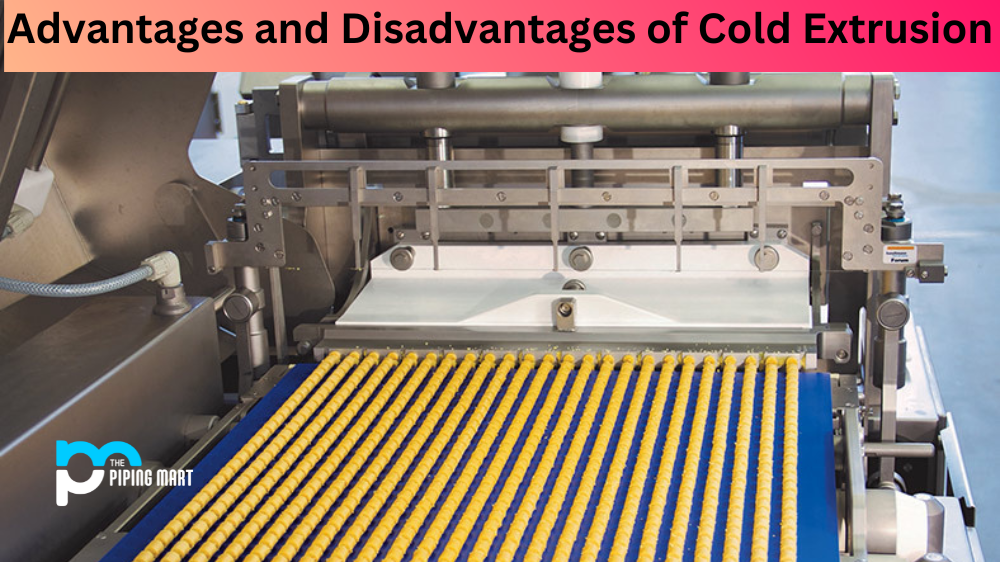Cold extrusion is a metal-forming process that involves forming a metal part by pushing it through a die at room temperature. This process is used to form parts with complex geometries and tight tolerances, making it an attractive option for manufacturers. In this post, we will explore the advantages and disadvantages of cold extrusion so you can make an informed decision about whether or not it’s the right process for your project.
Advantages of Cold Extrusion
The major benefit of cold extrusion is its ability to produce complex shapes with tight tolerances in one operation. This eliminates the need for multiple machining operations, which saves time and money. Additionally, since the material does not have to be heated before being formed, there are fewer thermal stresses on the material, which reduces the risk of cracking or other defects. The process also produces little waste material, which makes it more economical than other metal-forming processes.
Another key benefit of cold extrusion is its ability to achieve a greater range of surface finishes than other processes, such as rolling or forging. This allows designers to create higher-quality parts with superior strength and durability. The parts produced via cold extrusion also tend to be stronger than those produced through other methods because they undergo less deformation during processing.
- Cold extrusion is a process that can be used to create a variety of shapes and sizes from a variety of materials.
- The process of cold extrusion is much simpler than other methods of manufacturing, such as hot forging or machining.
- Cold extrusion can be used to create parts with very tight tolerances, as the material is not subject to high temperatures that can cause distortion.
- The process of cold extrusion also produces very little waste, as there is no cutting or machining involved.
- Cold extrusion is a very versatile manufacturing process that can be used to create a wide range of products.
Disadvantages of Cold Extrusion
Although there are many advantages to using cold extrusion, there are also some drawbacks that should be considered when deciding whether or not this method is right for your project. One of the major drawbacks is that it requires specialized tooling, which can be expensive and time-consuming to design and manufacture. Additionally, because the material is pushed through a die at room temperature, there is a chance that some materials may become brittle and crack during processing. Finally, since the material does not undergo any heat treatment during the process, it may require additional heat treatment after processing in order to achieve desirable properties such as strength or hardness.
Limited to certain materials
One of the primary disadvantages of cold extrusion is that it is limited to certain materials. Cold extrusion works best with ductile metals, such as aluminium, copper, and brass. These metals are able to be deformed at low temperatures without breaking. Harder metals, such as steel, are not well-suited for cold extrusion as they are more likely to break during the process.
Requires high levels of pressure
Another disadvantage of cold extrusion is that it requires high levels of pressure in order to work effectively. This can make the process more expensive as it requires special equipment that can apply high levels of pressure. Additionally, the high levels of pressure can make the process more dangerous as there is a greater chance of equipment failure.
Can cause material defects
Another downside of cold extrusion is that it can cause material defects. These defects can occur if the metal being extruded is not ductile enough or if the pressures used are too high. Material defects can reduce the strength and durability of the final product, which can be a major problem if the extruded parts are being used in critical applications.
Not suitable for large-scale production
Another disadvantage of cold extrusion is that it is not well-suited for large-scale production. The process is typically only used for small-scale production runs as it is not efficient for larger runs. Additionally, cold extrusion typically has a lower yield than other manufacturing processes, such as hot forging.
Conclusion:
Overall, cold extrusion can be an effective way to produce parts with complex geometries and tight tolerances in one operation with minimal waste material produced. Of course, like any manufacturing process, there are benefits and drawbacks associated with using this method that should be taken into consideration when deciding if it’s right for your project. If you do decide to use cold extrusion for your project, make sure you have designed specialized tooling for your specific application and have accounted for any potential issues that could arise from using this method prior to production. By doing so, you can ensure optimal results from your cold extruded parts every time!

Pipingmart is a B2B portal that specializes in metal, industrial and piping items. Additionally, we share the latest information and information about materials, products and various types of grades to assist businesses that are involved in this business.




